
The Sikorsky CH-53E Super Stallion is a heavy-lift helicopter operated by the United States military. As the Sikorsky S-80, it was developed from the CH-53 Sea Stallion, mainly by adding a third engine, adding a seventh blade to the main rotor, and canting the tail rotor 20°. It was built by Sikorsky Aircraft for the United States Marine Corps. The less common MH-53E Sea Dragon fills the United States Navy's need for long-range minesweeping or airborne mine countermeasures missions, and performs heavy-lift duties for the Navy. The Sikorsky CH-53K King Stallion, which has new engines, new composite rotor blades, and a wider aircraft cabin, is set to replace the CH-53E.

The HAL Dhruv is a utility helicopter designed and developed by Hindustan Aeronautics Limited (HAL) in November 1984. The helicopter first flew in 1992; its development was prolonged due to multiple factors including the Indian Army's requirement for design changes, budget restrictions, and sanctions placed on India following the 1998 Pokhran-II nuclear tests. The name comes from a Sanskrit origin word dhruv which means unshakeable or firm.

The Robinson R44 is a four-seat light helicopter produced by Robinson Helicopter Company since 1992. Based on the company's two-seat Robinson R22, the R44 features hydraulically assisted flight controls. It was first flown on 31 March 1990 and received FAA certification in December 1992, with the first delivery in February 1993.

The Bell 407 is a four-blade, single-engine, civil utility helicopter. A derivative of the Bell 206L-4 LongRanger, the 407 uses the four-blade, soft-in-plane design rotor with composite hub developed for the United States Army's OH-58D Kiowa Warrior instead of the two-blade, semi-rigid, teetering rotor of the 206L-4.

The vortex ring state (VRS) is a dangerous aerodynamic condition that may arise in helicopter flight, when a vortex ring system engulfs the rotor, causing severe loss of lift. Often the term settling with power is used as a synonym, e.g., in Australia, the UK, and the USA, but not in Canada, which uses the latter term for a different phenomenon.

The Sikorsky S-92 is an American twin-engine medium-lift helicopter built by Sikorsky Aircraft for the civil and military helicopter markets. The S-92 was developed from the Sikorsky S-70 helicopter and has similar parts such as flight control and rotor systems.

The Eurocopter AS350 Écureuil, now Airbus Helicopters H125, is a single-engine light utility helicopter originally designed and manufactured in France by Aérospatiale and Eurocopter. In North America, the AS350 is marketed as the AStar. The AS355 Ecureuil 2 is a twin-engine variant, marketed in North America as the TwinStar. The Eurocopter EC130 is a derivative of the AS350 airframe and is considered by the manufacturer to be part of the Écureuil single-engine family.
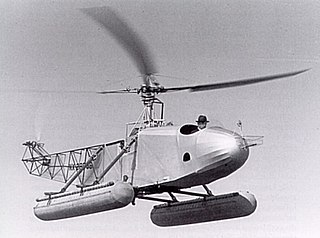
The Vought-Sikorsky VS-300 is an American single-engine helicopter designed by Igor Sikorsky. It had a single three-blade rotor originally powered by a 75 horsepower (56 kW) engine. The first "free" flight of the VS-300 was on 13 May 1940. The VS-300 was the first successful single lifting rotor helicopter in the United States and the first successful helicopter to use a single vertical-plane tail rotor configuration for antitorque. With floats attached, it became the first practical amphibious helicopter.

The Boeing A160 Hummingbird is an unmanned aerial vehicle (UAV) helicopter. Its design incorporates many new technologies never before used in helicopters, allowing for greater endurance and altitude than any helicopter currently in operation.

Ka Loko Reservoir is a reservoir created by an earthen dam on the island of Kauai, Hawaii. It is located on the north side of the island at 22°10′39″N159°22′39″W. Waters flow from Ka Loko Reservoir down to Waiakalua Reservoir, Waiakalua Stream and down to the Pacific Ocean.

A helicopter is a type of rotorcraft in which lift and thrust are supplied by horizontally spinning rotors. This allows the helicopter to take off and land vertically, to hover, and to fly forward, backward and laterally. These attributes allow helicopters to be used in congested or isolated areas where fixed-wing aircraft and many forms of short take-off and landing (STOL) or short take-off and vertical landing (STOVL) aircraft cannot perform without a runway.

The 2006 Morecambe Bay Helicopter Crash was a fatal air incident that occurred on 27 December 2006 at approximately 18:40 GMT, while remote platform crew were being transported from the Millom West via North Morecambe gas platforms to return them to the AP1, part of the Morecambe Field's Central Complex, situated approximately 24 miles (39 km) from the shoreline of Morecambe Bay, Lancashire, England.

The EurocopterEC130 is a single engine light utility helicopter developed from the earlier Eurocopter AS350 Écureuil, one of the primary changes from which was the adoption of a Fenestron anti-torque device in place of a conventional tail rotor. It was launched and produced by the Eurocopter Group, which would later be rebranded as Airbus Helicopters.

The EurocopterAS355 Écureuil 2 is a twin-engine light utility helicopter developed and originally manufactured by Aérospatiale in France
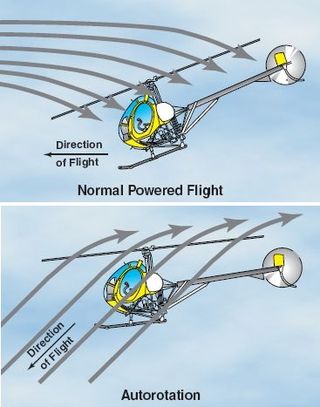
Autorotation is a state of flight in which the main rotor system of a helicopter or other rotary-wing aircraft turns by the action of air moving up through the rotor, as with an autogyro, rather than engine power driving the rotor. The term autorotation dates to a period of early helicopter development between 1915 and 1920, and refers to the rotors turning without the engine. It is analogous to the gliding flight of a fixed-wing aircraft. Some trees have seeds that have evolved wing-like structures that enable the seed to spin to the ground in autorotation, which helps the seeds to disseminate over a wider area.
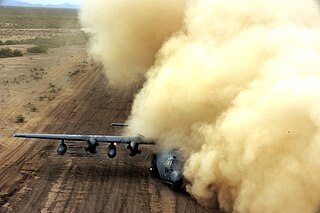
In aviation, a brownout is an in-flight visibility restriction due to dust or sand in the air. In a brownout, the pilot cannot see nearby objects which provide the outside visual references necessary to control the aircraft near the ground. This can cause spatial disorientation and loss of situational awareness leading to an accident. Pilots have compared landing during brownouts to parallel parking an automobile with one's eyes closed.
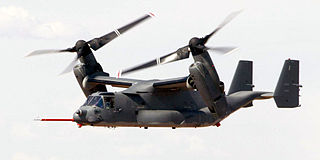
The Bell Boeing V-22 Osprey is an American military tiltrotor aircraft with an accident history that has generated controversy over its perceived safety. The aircraft was developed by Bell Helicopter and Boeing Helicopters; the companies partner in its manufacture and support.

Cougar Helicopters Flight 91 was a scheduled flight of a Cougar Sikorsky S-92A which ditched on 12 March 2009 en route to the SeaRose FPSO in the White Rose oil field and Hibernia Platform in the Hibernia oilfield off the coast of Newfoundland 55 kilometres (34 mi) east-southeast of St. John's, Newfoundland. Of the eighteen aboard, only one survived.
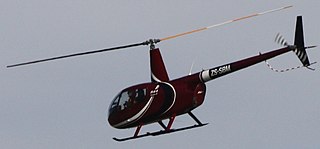
On the 5th of March, 2021, a Robinson R44 helicopter crashed in the outskirts of Xumabee near Sojwe in Botswana. There were two people onboard the R44: The pilot, Leonard Matenje, director for Air Technology Services, treasurer of Professional Hunters Association and the Botswana Wildlife Producers Association, who survived, and Sasa Klaas, a Motswana musician, who died at the scene.





















